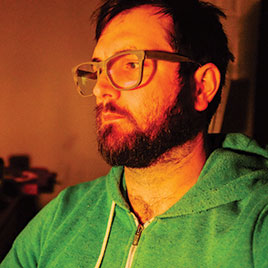This story appeared in the February Issue of VICE magazine. Click HERE to subscribe.
We created this month's cover image by using a deep convolutional generative adversarial network, or DCGAN. This is a machine-learning technique that's at the forefront of image generation. While Google's Deep Dream gets all of the hype, DCGAN offers a "purer" approach, creating images from training data alone—in this case VICE covers—rather than attempting to match and enhance patterns from a usually arbitrarily chosen seed image, like Deep Dream. And, let's be honest, the colorful blobs on our cover are more aesthetically pleasing than precisely all of the Deep Dreams ever rendered.
Advertisement
A trio of computer scientists led by Alec Radford, then a researcher at Indico Data, first described DCGAN in 2015. Basically, one half of it starts drawing random stuff, which is then presented to the other half, which then holds a model of a sort of idealized image abstracted away from all of the training images. This other, "informed" half passes a judgment on the drawings it sees, and, if they're crappy, the generative "naïve" half scraps the current attempt and tries again. If the informed half likes what it sees, the generative half uses that information to make a better image. The process repeats again and again and again. Even using a high-performance computing cluster, it can take several hours to get anything actually interesting to look at.The whole process of generating the cover image took about a month: There was a lot of trial and error involved. We probably wound up with around 100 GB in intermediate and sample images. All of the work was done on Amazon high-performance computers running machine-learning frameworks and libraries such as Torch, Caffe, TensorFlow, and Theano.

Michael Byrne has been an editor at Motherboard since the site launched in 2009. In addition to covering physics, math, and computer science, he writes a regular column on creative coding called Hack This. In his free time, Michael plays the violin and does graduate research in computer science. He currently lives in Portland, Oregon. Update 2/8/17: An earlier version of this article stated that Soumith Chintala, an AI researcher who works at Facebook, led the group of computer scientists. It was Alec Radford, who worked at Indico Data.
